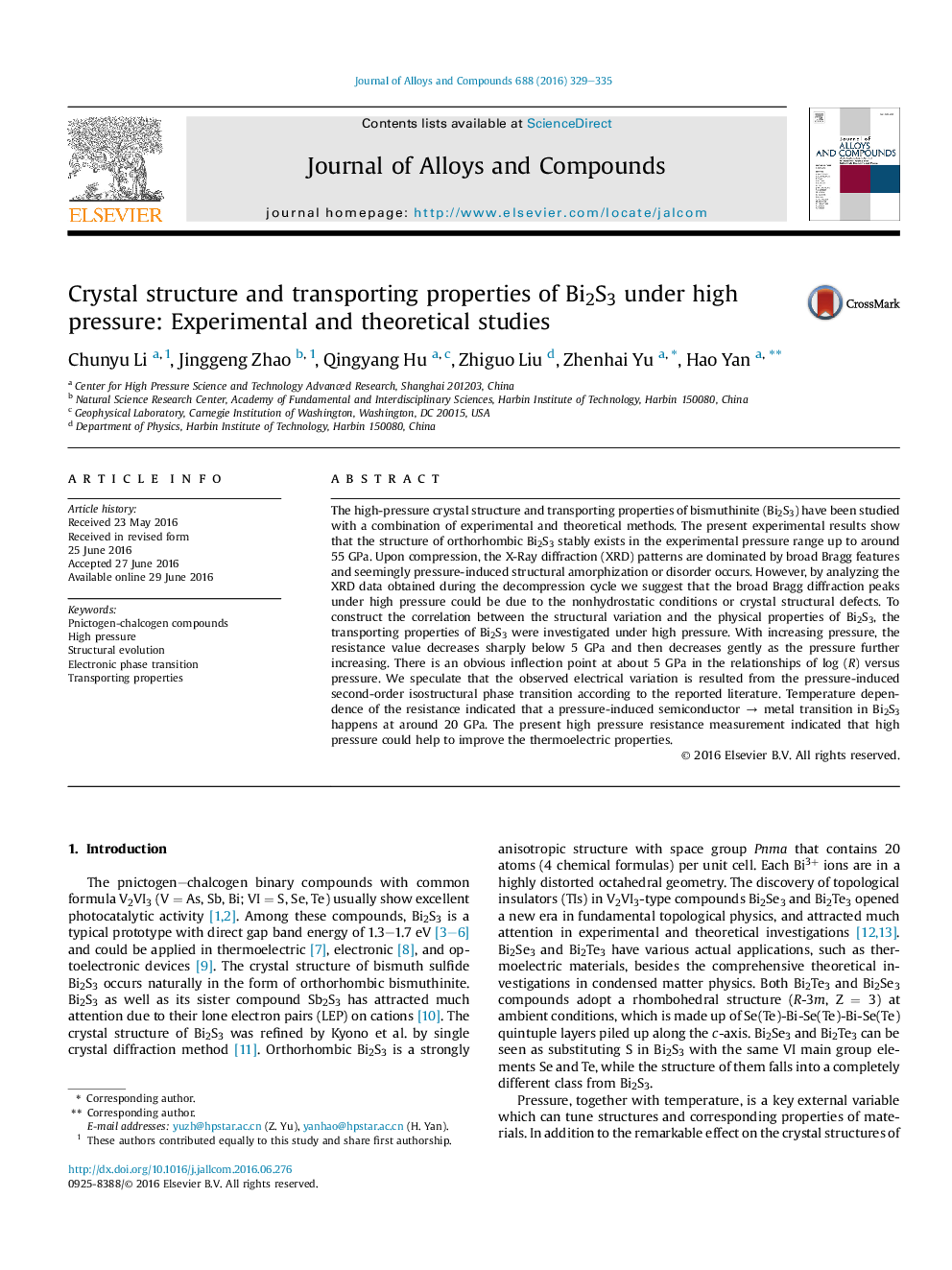| Article ID | Journal | Published Year | Pages | File Type |
|---|---|---|---|---|
| 10656382 | Journal of Alloys and Compounds | 2016 | 7 Pages |
Abstract
The high-pressure crystal structure and transporting properties of bismuthinite (Bi2S3) have been studied with a combination of experimental and theoretical methods. The present experimental results show that the structure of orthorhombic Bi2S3 stably exists in the experimental pressure range up to around 55 GPa. Upon compression, the X-Ray diffraction (XRD) patterns are dominated by broad Bragg features and seemingly pressure-induced structural amorphization or disorder occurs. However, by analyzing the XRD data obtained during the decompression cycle we suggest that the broad Bragg diffraction peaks under high pressure could be due to the nonhydrostatic conditions or crystal structural defects. To construct the correlation between the structural variation and the physical properties of Bi2S3, the transporting properties of Bi2S3 were investigated under high pressure. With increasing pressure, the resistance value decreases sharply below 5 GPa and then decreases gently as the pressure further increasing. There is an obvious inflection point at about 5 GPa in the relationships of log (R) versus pressure. We speculate that the observed electrical variation is resulted from the pressure-induced second-order isostructural phase transition according to the reported literature. Temperature dependence of the resistance indicated that a pressure-induced semiconductor â metal transition in Bi2S3 happens at around 20 GPa. The present high pressure resistance measurement indicated that high pressure could help to improve the thermoelectric properties.
Related Topics
Physical Sciences and Engineering
Materials Science
Metals and Alloys
Authors
Chunyu Li, Jinggeng Zhao, Qingyang Hu, Zhiguo Liu, Zhenhai Yu, Hao Yan,
